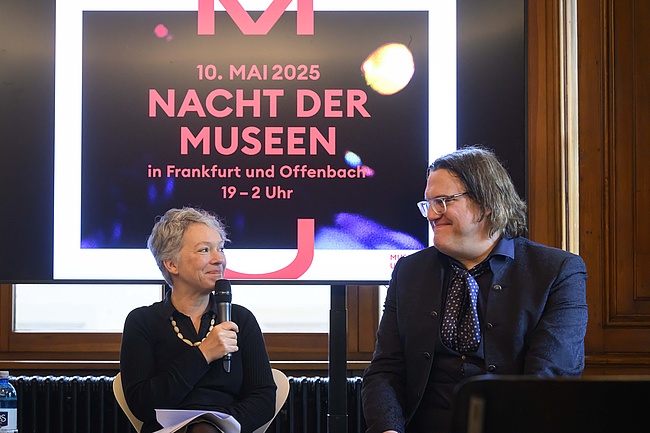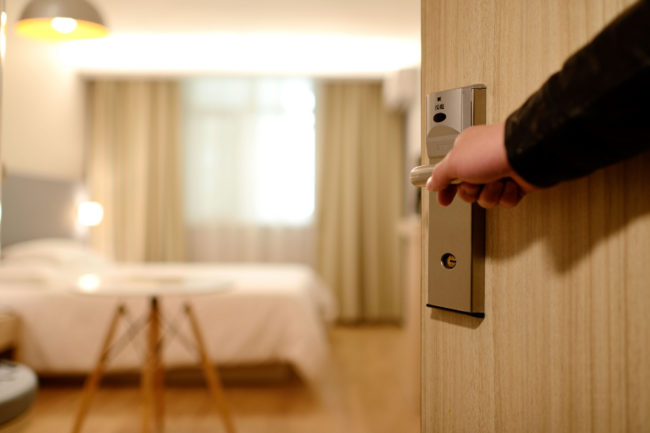Robert Sommer is leading the renovation and restoration of the Kaiserdom St. Bartholomäus
(kus) It is probably no exaggeration to say that no one knows Frankfurt Cathedral better than Robert Sommer. For the 64-year-old architect and monument conservation expert has been responsible for the architectural well-being of the imperial cathedral of St. Bartholomew, built between 1250 and 1514, for almost twenty-five years. For the past ten years, he has officially held the title of cathedral architect.
When Robert Sommer talks about his work, he speaks soberly and matter-of-factly about the currently once again scaffolded sacred building steeped in history. "We have a smaller building here - compared to Cologne Cathedral. On the other hand, the history of the cathedral is very complex. Its construction was also a sign of power in the free imperial city of Frankfurt. As a place of election and coronation, it has above all great historical significance," Sommer explains.
The fact that Robert Sommer watches over the architectural well-being of the imperial cathedral on behalf of the city and not the bishopric of Limburg is due to a centuries-old special regulation. In 1533, the Frankfurt Council had decreed that Catholic services could no longer be celebrated in the city. This meant that Frankfurt had converted to the Protestant faith, but as a trade fair city and as the city where emperors were elected and crowned, the free imperial city was dependent on the goodwill of the emperor, who fought the Reformation. Hardly any emperor would have been willing to be crowned in a Protestant parish church of St. Bartholomew.
When the Diet of Augsburg decreed the restitution of parts of the Catholic possessions, the parish church of St. Bartholomew, St. Peter's Church, and the Church of the Epiphany were returned. Since the churches could not bear these financial burdens, a contract was concluded in 1830 in which the city of Frankfurt undertook to maintain eight churches in the city, now the inner city, with all their facilities such as bells and organs, and to pay the parish priests, bell-ringers and organists.
As Frankfurt's cathedral architect, Sommer is thus also responsible for the maintenance of the other inner-city dotation churches in accordance with the preservation order, as well as the Höchst Bolongaro Palace, but also for other work, such as on Frankfurt's Römer. At present, particular mention should be made of the major interior renovation of St. Leonhard's Church, the oldest church in Frankfurt's inner city, as well as the interior renovation of the Liebfrauenkirche. "Half of my working hours are spent in the office, the rest of the time I'm outside," says Sommer. At the moment he is once again mainly working around the cathedral construction site.
But Sommer has also been actively supervising the eight-year facade renovation of the Alte Oper. One of his tasks is to discuss with experts and the preservation authorities how to achieve a restoration that is as true to the original as possible and in keeping with the preservation order.
It is not unusual for Sommer to search archives for old floor plans, construction plans and photos. But despite the most thorough research, it is not always possible to restore all elements strictly according to the historical model. "This is extreme detail work, also because we don't always know what the original appearance was," explains the cathedral architect. In his search for historical models, Sommer also exchanges ideas with his colleagues from the European Association of Cathedral Builders. After all, they not infrequently encounter similar problems.
Robert Sommer has always been interested in historical buildings. After studying in Mainz, he first worked for an architectural firm specializing in the retrofitting of listed buildings. The architect, who specializes in the preservation and reconstruction of historical monuments, began his work in Frankfurt as early as 1985, when he was involved in the renovation and modernization of the Palmengarten. In 1988, Sommer began work on the cathedral. However, "When the interior renovation was finished in 1994, it was clear that no more major work was due for the time being." So Sommer moved on and, on behalf of the Limburg diocese, supervised 75 parishes and there mainly historic churches.
But when smaller facade elements fell from the cathedral spire between 1997 and 2000, the building construction office remembered the meticulous architect and brought him back to Frankfurt. From 2000 to 2009, Robert Sommer was responsible for the extensive renovation of the cathedral tower as head of construction and project manager. In 2007, he received the title of cathedral master builder. "The renovation of the cathedral tower was a house number that had not existed before. That was a special incentive for me. The crazy thing was that 95 percent of the historic fabric was in good condition. We looked at historical records and visited a restorer who had been involved in the work in the 1970s," Sommer explains.
While working on the cathedral spire, Sommer and his team quickly discovered that mortar, rather than sandstone, had been applied to most of the facade during the last restoration in the 1970s. This had crumbled away after only a few years - and had become a danger for visitors and passers-by. "Regular inspections and tower inspections are therefore important," explains the expert.
At present, Robert Sommer is probably entrusted with his last major project at Frankfurt Cathedral. Since the beginning of 2014, the cathedral architect has been having the roof and the facades of the north transept, nave and south transept renovated. Originally, only three years of construction time were expected. But since the wooden roof cladding over the roof truss on the north transept was dilapidated, it had to be replaced at great expense. Only then could the roofers move in and install new slates at a pitch of over 60 degrees.
"The cathedral roof had been defective for 20 years. The old slate tiles are almost 70 years old and many of the nails used were too short," explains the cathedral's master builder, which is why the roof work will probably take a little more time. But: "When the roof and façade are finished at the end of 2019, the major construction sites will be completed," Sommer hopes to be able to leave a completely overhauled imperial cathedral to a possible successor.
"What we are doing here is not normal construction," explains Robert Sommer. It is true that the costs can be calculated in advance. But when renovating listed buildings, one inevitably encounters surprises and obstacles that cannot be calculated or identified in advance. 6.6 million euros have been estimated for the roof and facade renovation. The renovation of the cathedral tower alone had cost 8.8 million euros. The general overhaul inside the cathedral in the mid-1990s cost 28 million marks, Sommer balances.
Incidentally, one of the biggest difficulties is that the workmen are not allowed to work from conventional scaffolding on the roof of the cathedral for safety reasons. The roof truss is also not allowed to be loaded with additional loads, such as scaffolding. This is because after the great cathedral fire of 1867, a new roof truss was made of puddle steel, which is only capable of supporting its own weight.
The current work on the cathedral, however, also has its advantages from an architectural and historical point of view. For example, it has been possible for the first time to produce exact plans of the imperial cathedral, accurate to the millimetre, by means of a photogrammetric survey. In addition, the north portal, which dates from the 14th century and was supplemented in the 19th century by the figures of Jesus Christ and his twelve disciples, could be scientifically examined. According to Robert Sommer, the depiction of the "Last Judgement" is one of the most historically significant portals, which is also excellently preserved for its age. Nevertheless, there is still only one scientific treatise dealing with the north portal of the imperial cathedral. Frankfurt's cathedral architect hopes that, as long as the scaffolding is still standing, a historian will take up the study of the portal.
Author: Mirco Overländer












